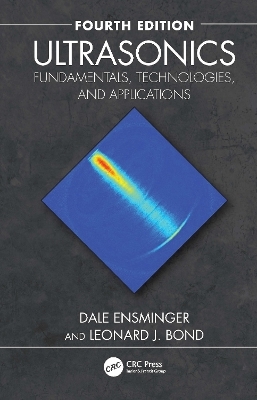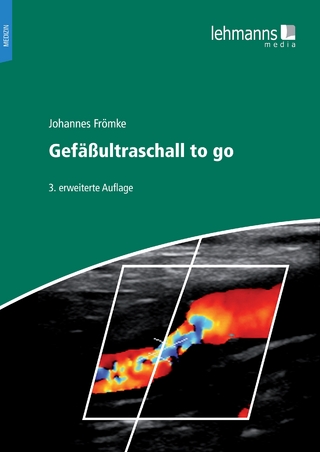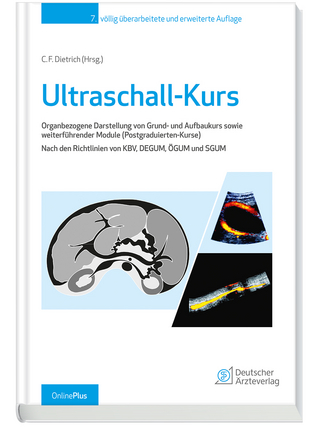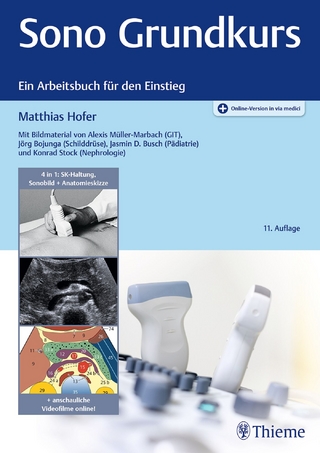
Ultrasonics
CRC Press (Verlag)
978-0-367-25281-6 (ISBN)
Updated, revised, and restructured to reflect the latest advances in science and applications, the fourth edition of this best-selling industry and research reference covers the fundamental physical acoustics of ultrasonics and transducers, with a focus on piezoelectric and magnetostrictive modalities. It then discusses the full breadth of ultrasonics applications involving low power (sensing) and high power (processing) for research, industrial, and medical use. This book includes new content covering computer modeling used for acoustic and elastic wave phenomena, including scattering, mode conversion, transmission through layered media, Rayleigh and Lamb waves and flexural plates, modern horn design tools, Langevin transducers, and material characterization. There is more attention on process monitoring and advanced nondestructive testing and evaluation (NDT/NDE), including phased array ultrasound (PAUT), long-range inspection, using guided ultrasonic waves (GUW), internally rotary inspection systems (IRIS), time-of-flight diffraction (TOFD), and acoustic emission (AE). These methods are discussed and applied to both metals and nonmetals using illustrations in various industries, including now additionally for food and beverage products. The topics of defect sizing, capabilities, and limitations, including the probability of detection (POD), are introduced. Three chapters provide a new treatment of high-power ultrasonics, for both fluids and solids, and again, with examples of industrial engineering, food and beverage, pharmaceuticals, petrochemicals, and other process applications. Expanded coverage is given to medical and biological applications, covering diagnostics, therapy, and, at the highest powers, surgery.
Key Features
Provides an overview of fundamental analysis and transducer technologies needed to design and develop both measurement and processing systems
Considers applications in material characterization and metrology
Covers ultrasonic nondestructive testing and evaluation and high-power ultrasonics, which involves interactions that change the state of material
Highlights medical and biomedical applications of ultrasound, focusing on the physical acoustics and the technology employed for diagnosis, therapy, surgery, and research
This book is intended for both the undergraduate and graduate scientists and engineers, as well as the working professional, who seeks to understand the fundamentals together with a holistic treatment of the field of ultrasonics and its diversity of applications.
Dale Esminger attended The Ohio State University and graduated with Bachelors degrees in both Mechanical and Electrical Engineering in 1950. He also undertook post-graduate studies at OSU between 1950 and 1953. Dale began working at Battelle Memorial Institute in 1948, while still a student at OSU, and worked there until his retirement in January 1988. During his time at Battelle he was active in research in ultrasonics. He was involved in about 1,000 different projects relating to ultrasonics, acoustics and related areas. He also holds many patents related to these projects. He was a member of the Acoustical Society of America, Ultrasonics Industry Association, and the American Society for Nondestructive Testing (ASNT). Leonard J. Bond graduated with his PhD in Physics in 1978 from the City University London. He has experience as an academic, in industry, with national laboratories, as a consultant and expert witness. He started his research career with British Gas, who sponsored his graduate work, which considered models and experiments for ultrasonic Rayleigh wave interactions with defects. His post-doc was sponsored by the UK’s Propellants, Explosives, and Rocket Motors Establishment (PERME), Westcott. He then held a succession of faculty positions at University College London (UCL), where he was a founding member of the UCL NonDestructive Evaluation Center. For his contributions to the field at UCL he was appointed Reader in Ultrasonics. He moved to the USA as a Research Professor at the University of Colorado, and Guest Researcher, NIST (Boulder). He also worked with the University of Denver, Denver Research Institute (DRI), continuing his research in various aspects of ultrasonics. He moved to the Pacific Northwest National Laboratory (PNNL) in 1998, where he was a Laboratory Fellow. He was on a special assignment as the founding Director of the Center for Advanced Energy Studies (CAES) at the Idaho National Laboratory (INL) in 2005-6. In 2007 he returned to PNNL, as a Laboratory Fellow, with a focus on ultrasound measurements in hostile environments. He joined Iowa State University (ISU) as Director of the Center for NDE (CNDE) in July 2012, where he was a Professor of both Aerospace Engineering and Mechanical Engineering. He stepped down from CNDE Director, in May 2018. At ISU he also served as Interim Director for ISU’s Institute for Physical Research and Technology (IPRT), from October 2012 until June 2014. From 2018 he continued as a Professor at ISU engaged in both research and teaching, including coordinating the Minor in NDE. On July 1st 2022 he became a Professor Emeritus, Aerospace Engineering (ISU), and he continues with some research in both ultrasonics and radiography.
Chapter 1 Ultrasonics: A Broad Field
Chapter 2 Ultrasonic Wave Propagation and Associated Phenomena
Chapter 3 Fundamental Equations Employed in Ultrasonic Design and Applications
Chapter 4 Design of Ultrasonic Horns for High-Power Applications
Chapter 5 Basic Design of Ultrasonic Transducers
Chapter 6 Determining Properties of Materials
Chapter 7 Imaging, Process Measurements, and Low-Intensity Applications
Chapter 8 Nondestructive Testing: Basic Methods and General Considerations
Chapter 9 Use of Ultrasonics in the NDE of Metals
Chapter 10 Use of Ultrasonics in the Inspection and Characterization of Nonmetals
Chapter 11 Fundamentals for High-Intensity Ultrasonics: Basic Mechanisms and Effects
Chapter 12 Engineering Applications of High-Intensity Ultrasonics
Chapter 13 High-Power Ultrasonics in Process Industries and Environmental Applications
Chapter 14 Medical and Biomedical Applications of Ultrasonic Energy
Glossary
Appendix A
Appendix B
| Erscheinungsdatum | 23.02.2024 |
|---|---|
| Zusatzinfo | 59 Line drawings, color; 209 Line drawings, black and white; 88 Halftones, color; 22 Halftones, black and white; 147 Illustrations, color; 231 Illustrations, black and white |
| Verlagsort | London |
| Sprache | englisch |
| Maße | 189 x 246 mm |
| Gewicht | 2077 g |
| Themenwelt | Medizinische Fachgebiete ► Radiologie / Bildgebende Verfahren ► Sonographie / Echokardiographie |
| Medizin / Pharmazie ► Physiotherapie / Ergotherapie ► Orthopädie | |
| Technik ► Elektrotechnik / Energietechnik | |
| Technik ► Medizintechnik | |
| Technik ► Umwelttechnik / Biotechnologie | |
| ISBN-10 | 0-367-25281-3 / 0367252813 |
| ISBN-13 | 978-0-367-25281-6 / 9780367252816 |
| Zustand | Neuware |
| Informationen gemäß Produktsicherheitsverordnung (GPSR) | |
| Haben Sie eine Frage zum Produkt? |
aus dem Bereich


